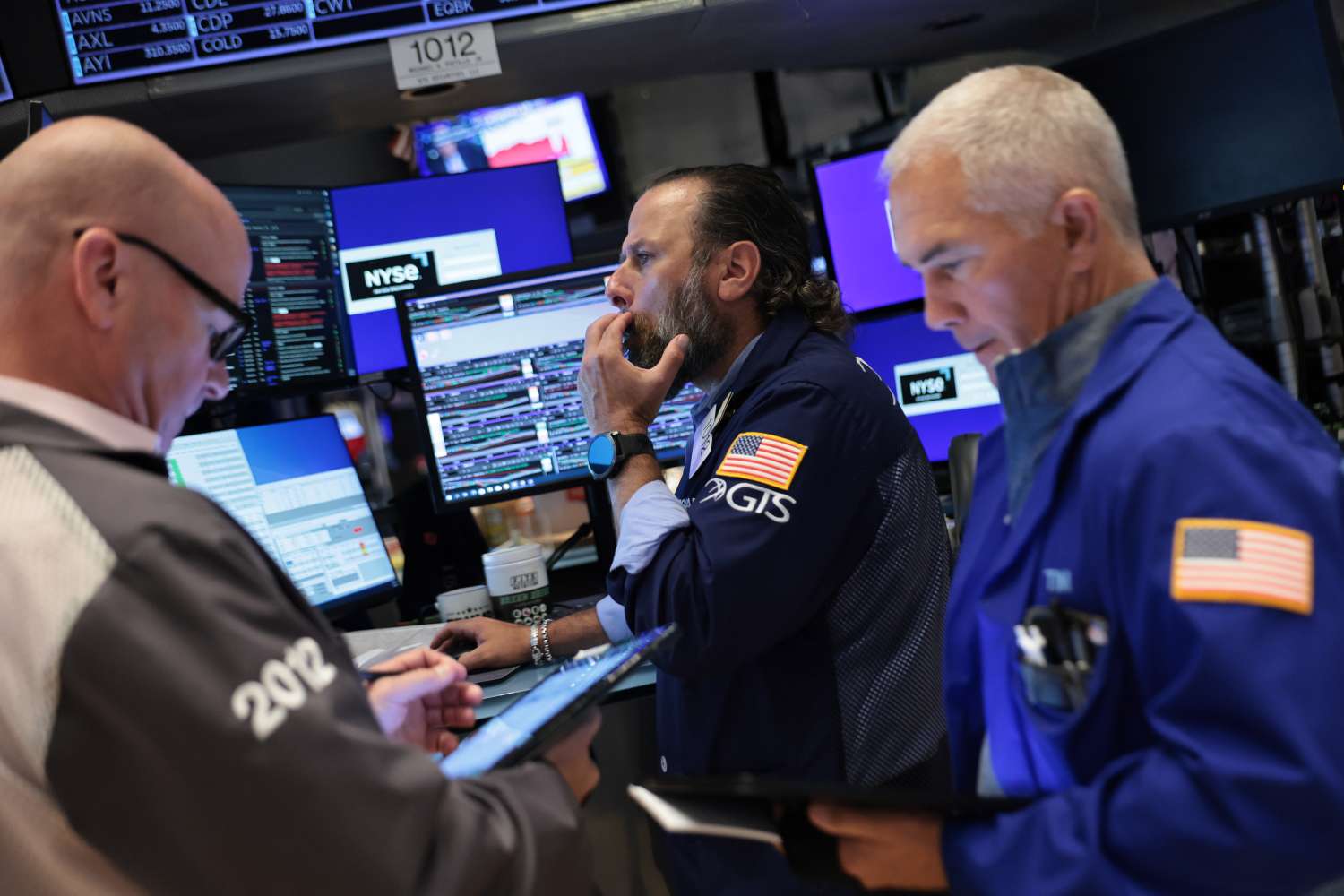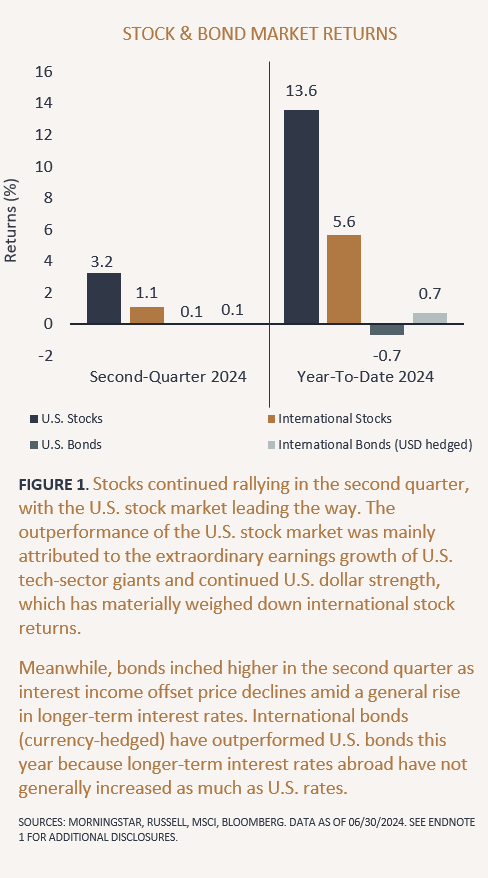An Unstoppable Momentum in Tech Markets
On July 10, 2025, U.S. equity markets surged, buoyed by signs that artificial intelligence (AI) is more than a sector—it’s the engine powering market momentum. Tech stocks have not only dominated valuations but have become central to broader economic optimism. According to recent analysis by Axios, technology and communication services now comprise over 45% of the S&P 500, reflecting AI’s profound influence on investor sentiment and positioning
Nvidia: The Face of the AI Boom
Leading the charge is Nvidia, which has officially surpassed a $4 trillion market capitalization, making it the first public company ever to reach that milestone With its GPUs powering data centers globally—from OpenAI’s systems to hyperscale cloud infrastructures—Nvidia is emblematic of AI’s dominance. Remarkably, its valuation represents about 7.3% of the S&P 500, eclipsing even Apple and Microsoft in proportional weight
Over the past few years, Nvidia’s stock has soared close to 287%, including an impressive 18% gain in 2025 alone Reuters. Yet despite its astronomical valuation, trading at around 32–34× forward earnings, analysts note that this still falls below its recent five-year average multiples, or more speculative stocks like Tesla .
What Analysts Are Saying
Market observers are bullish. Mary Ann Bartels, chief strategist at Sanctuary Wealth, expects the S&P 500 to hit 7,000 by the end of 2025, implying a 12% upside from current levels. She attributes this primarily to continued advances in AI—especially from largescale players investing in cloud, robotics, and machine intelligence
Still, some caution exists. Richard Bernstein, CIO at RBA, warns that the AI frenzy may echo the dot-com bubble—pointing to overzealous valuations driven by sentiment rather than fundamentals. He advocates for exposure to dividend stocks rather than chasing AI hype, which, he believes, may lead to long-term underperformance if expectations outpace reality
The Bigger Picture: Market Dynamics and Risks
Concentration in the Magnificent Seven
The so‑called “Magnificent Seven”—Nvidia, Apple, Microsoft, Amazon, Alphabet, Meta, and Tesla—are steering market trends. These giants account for a disproportionately large share of market returns and valuation. Unlike the 1990s tech era, however, today’s firms deliver strong earnings and maintain more disciplined capitalization metrics .
Is It a Bubble?
Comparisons to the late 1990s are tempting. Barron’s reports that even at current high valuations, AI‑driven profits remain rooted in real growth—unlike speculative excitement that marked the dot-com bubble . Still, potential warning signs include subdued volatility indicators and credit spreads alongside soaring equity valuations, which some interpret as evidence of investor complacency
Other analysts—including from Reuters’ Breakingviews—caution that Nvidia’s meteoric rise could eventually follow the trajectory of past tech leaders like Cisco. Indeed, if current enthusiasm shatters historical patterns, Nvidia’s valuation could even exceed $15 trillion, though such projections are viewed as extreme and speculative
Macro Forces at Play
Several broader dynamics shape AI’s role in market performance:
- Capital Expenditure Surge: Big tech firms (Microsoft, Amazon, Google) are expected to spend over $200 billion in 2025 on AI infrastructure, with over $90 billion incremental over 2023 levels. That underpins demand for hardware and data center expansion, directly benefiting chipmakers and cloud service providers
- Investment Thesis & Rotation: BlackRock and other institutional investors emphasize thematic allocation—shifting from tariff-sensitive manufacturing toward AI and services firms less exposed to global friction
- Economic Divergence: While corporate earnings remain healthy—with 78% of Q1 companies beating expectations—economic indicators vary. A slowing consumer economy and persistent tariffs introduce growth uncertainty, even as markets remain tech-disciplined
Supporting Evidence: Beyond Nvidia
AI isn’t just about Nvidia. Other high-growth names—like Duolingo, Innodata, and Quantum Computing Inc.—are delivering massive returns. Quantum Computing logged a staggering 2,757% return in 12 months, while Duolingo rose 54% in 2025 alone, outpacing the S&P 500 by wide margins
Investors are also watching firms in AI software, cybersecurity, and analytics—areas expected to see robust demand as AI becomes embedded across industries from HR and manufacturing to call centers and retail operations .
Limitations of AI in Investing
Despite its popularity, AI remains imperfect as an investment forecasting tool. Gappy Paleologo, a quant at Balyasny Asset Management, argued that large language models lack the intuitive judgment of human investors. While useful for data summarization and automation, AI tools today can’t fully replace human nuance in evaluating companies or industry shifts Academic studies support this: LLMs can assist in analysis and even predict patterns, but their predictive edge typically falls short of human-informed strategic decisions .
Looking Ahead: Catalysts and Risks
Earnings Seasons and Surprises
As Q2 earnings approach, expectations are modest. Analysts foresee potential positive surprises, particularly among tech companies demonstrating robust AI implementation and pricing power. Markets could respond strongly to stellar guidance—or conversely, disappoint if execution misses high expectations
Macro and Policy Shifts
Tariffs, inflation, and Fed policy are still influential. Should inflation remain sticky or trade tensions escalate, markets might rotate to defensive or value stocks. Conversely, a dovish Fed or easing trade policy could reinforce AI‑led rallies .
Regulatory Headwinds
Regulators in New York and Texas recently enacted major AI-oriented legislation, and further federal oversight is anticipated. How such policies evolve could influence sector valuations, especially for firms reliant on generative AI infrastructure and data usage .
Investment Strategies: Navigating the AI Wave
Analysts recommend several approaches amid the AI boom:
- Thematic Rotation: Shift funds toward companies benefiting from AI infrastructure and integration, while reducing exposure to sectors vulnerable to tariffs (e.g. global commodities or export-dependent manufacturers) .
- Hedging and Diversification: Maintain balanced portfolios with traditional dividend payers and defensive equities to mitigate concentration risk from hyper-growth AI names .
- Focus on Execution: Look beyond hype—prioritize firms demonstrating strong implementation of AI across operations (e.g., software firms, AI-enabled services) rather than purely valuation-driven speculative plays .
Conclusion: AI Isn’t Just a Trend — It’s a Market Driver
The current equity bull run is increasingly singular: AI is the core amplifier of investor confidence, not ancillary—supporting both valuation and growth narratives. Nvidia’s ascent past $4 trillion symbolizes this new paradigm, and its dominance is shared by other tech leaders shaping the “Magnificent Seven” cohort But excitement must be tempered: risks abound—from macro policy shifts to valuation excess and regulatory changes.






Leave a Reply